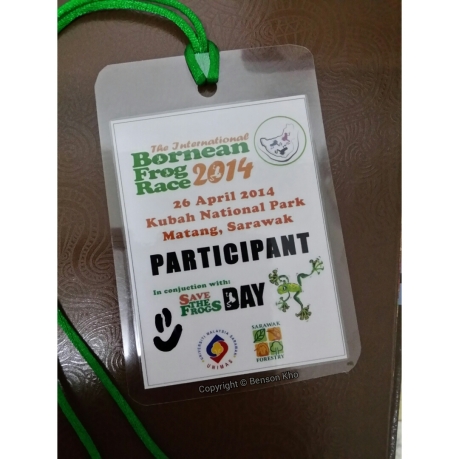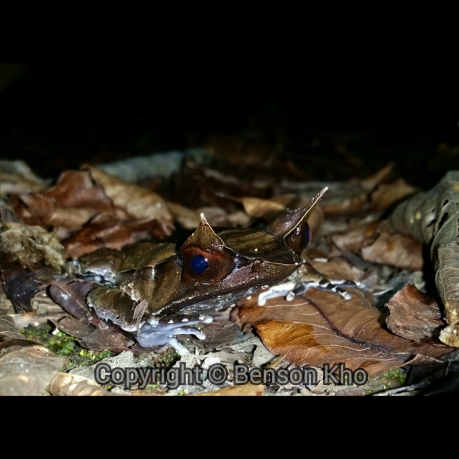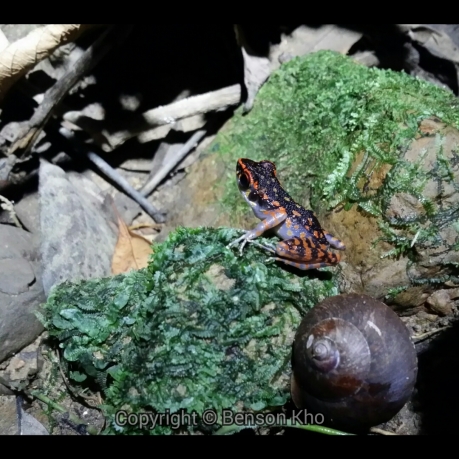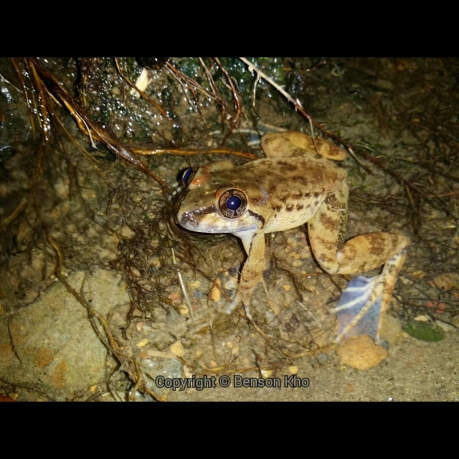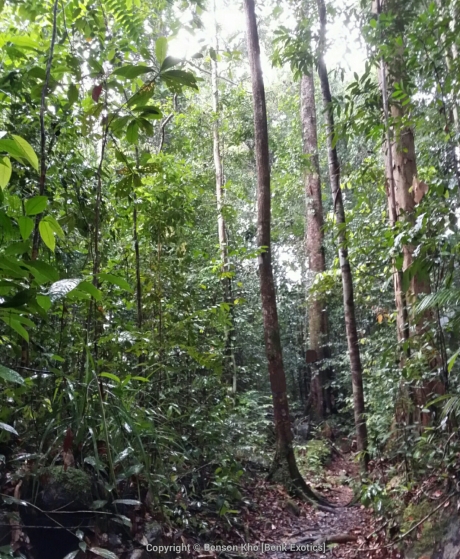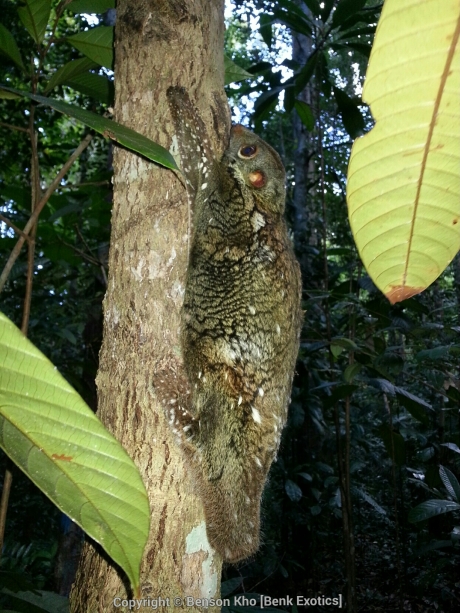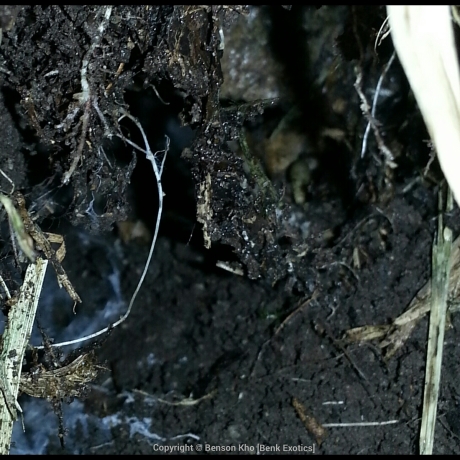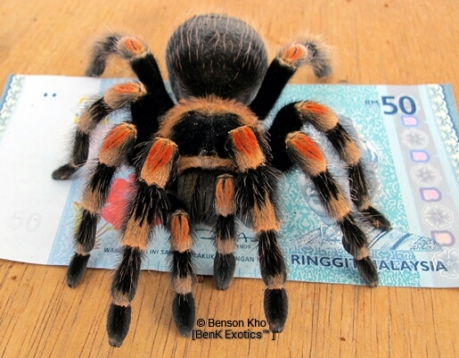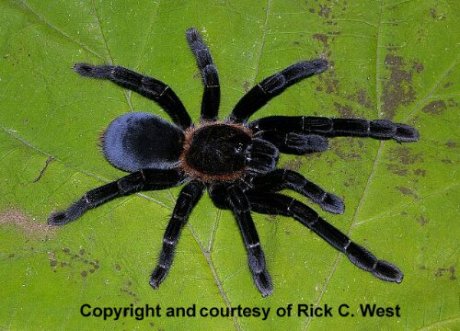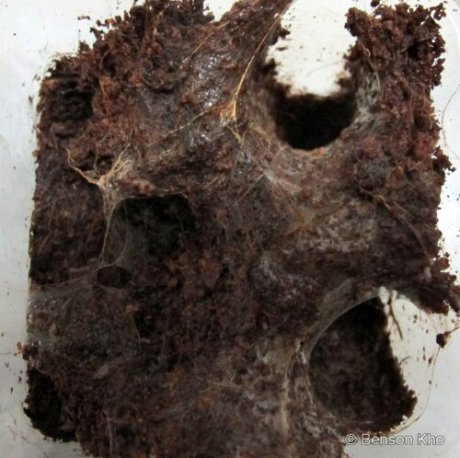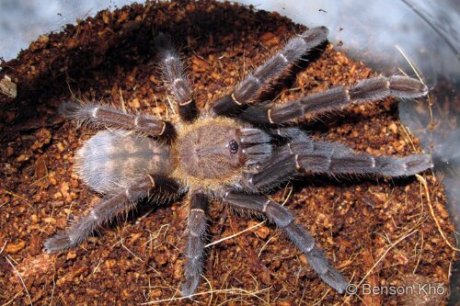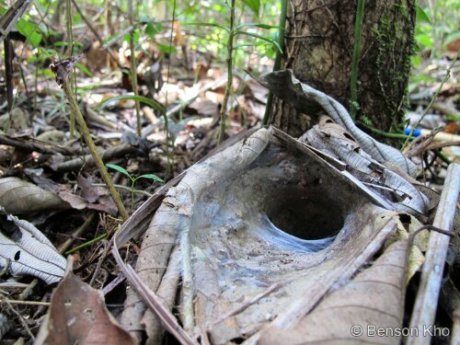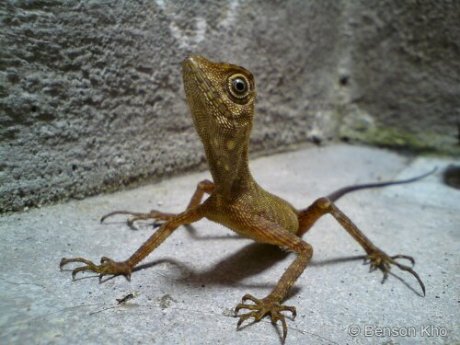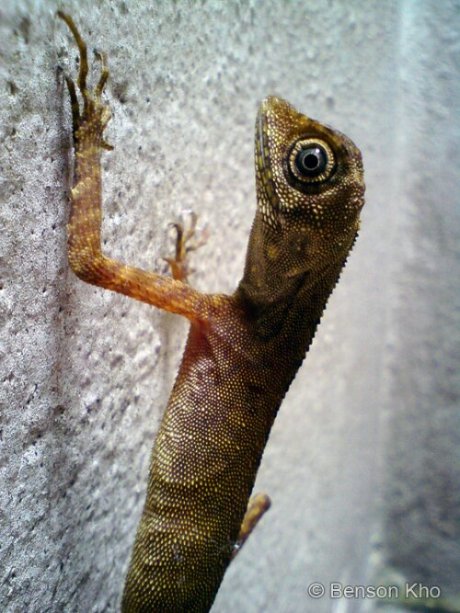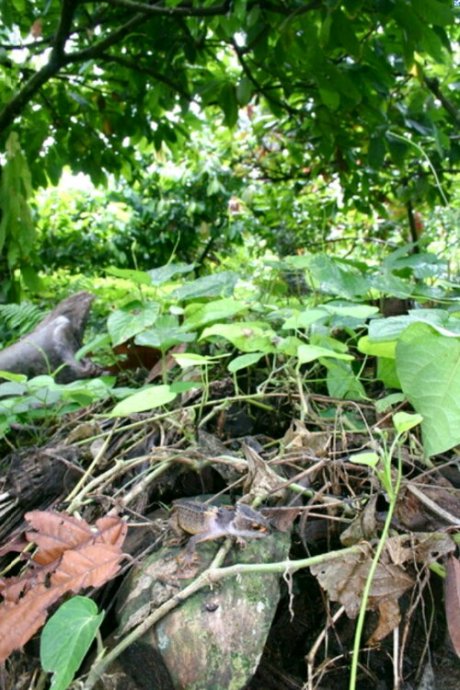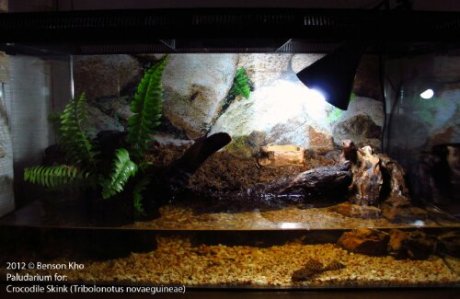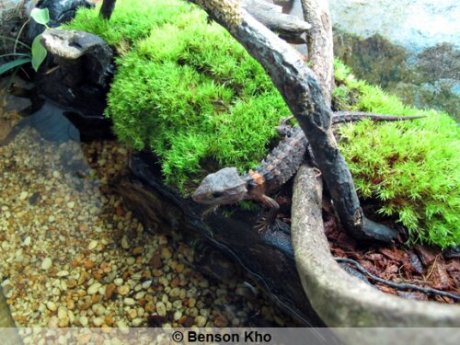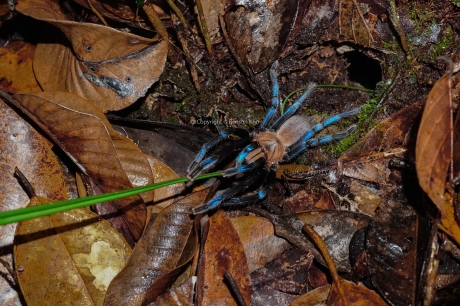
To some locals (Sarawakians) who have long ago seen them, they were just blue spiders. But to a tarantula enthusiast, they were really cool blue tarantulas. At least to me it was when I first saw one. Obsessed with tarantulas, I have always been in the look out for local Bornean species. The majority of them were the dull looking brown or black tarantulas with a few exceptions from the genus Phormingochilus, Cyriopagopus and some Phlogiellus.
So I was really excited when my girlfriend then (now my wife) saw a tarantula with blue legs which by color alone, surpasses all the above mentioned local species in looks and beauty. At first glance with only its front legs exposed outside its burrow, I initially thought it was just the black tarantula commonly seen. However after moving in for a closer look, we saw that the upper side of its legs were actually blue! No, it was obviously NOT a Coblat blue (Haolopelma lividum) which is native to Myanmar and over the border into Thailand. It also did not resemble any Haplopelma but instead appeared more like a Selenocosmia or Chilobrachy. This was definitely a new species, this “blue beauty”. However back then, I was so overwhelmed by excitement that before my mind could think of taking a photograph, this tarantula bolted into its burrow.
Both of us decided that we must go back for a good photograph. We would take long drives and then hike to the “blue spot” (our codename for the location). Even after a few visits we were still unable to lure it out of its burrow for a nice photograph. The “blue beauty” was too agile and shy. Extremely sensitive to vibration, even the slightest movement will send it back into its burrow. Eventually after many unsuccessful attempts we decided to search around the same area for another one. We also began searching other locations in Sarawak and eventually found a few more.
Below is our very first photograph taken in 2013. It was briefly mentioned in my 2014 blog post: https://benkexotics.wordpress.com/2014/03/04/the-search-for-sarawaks-smallest-and-undescribed-tarantula-by-benson-kho/
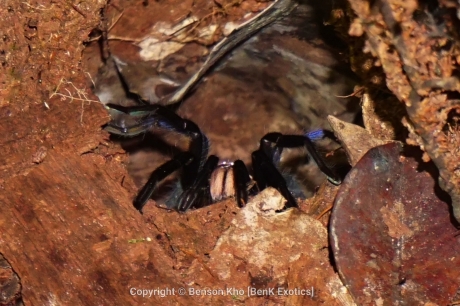
Sarawak Blue Beauty – Birupes simoroxigorum in-situ. Our very first photograph. This picture was actually posted in my old blog, BenK Exotics in 2014.
Few years later, in 2018 I received a private message from a German photographer friend Lars, who showed me a photograph of the “blue beauty” before it was posted on social media. Having just recently met Lars then, I was unsure of who I could trust so I denied ever seeing one. I wanted to see how things go from here. I did not care who gets the credit for the discovery. We were not the only people who already knew its existence because we know some local natives who have also seen them in the past near their village. So I never ask Lars where his photograph was taken but I am certain I told Lars, “please do not expose the location”. Inside me however, I was secretly hoping it wasn’t the same location as our “blue spots” though it is only a matter of time someone else might also come across this tarantula. I just did’nt expect it to be so soon!
Thankfully today I realised that non of these locations are anywhere near our “blue spots”. To me, some things are better off kept as a secret or never be found.
Until today, our “blue spots” remains a secret shared by only my wife and I. We have never once told anyone about this. Of course back then, the idea or exposing it and hopefully have a new species named after us was tempting. However the irony is once a new species is discovered and published to the world, it has been proven to do more harm than good. The “blue beauty” is a good example. Not long after Lars and Chien Lee’s photographs were posted online, outsiders were quick to visit Sarawak to collect this newly discovered species and posted photographs of themselves with wild caught specimens. This “blue beauty” is today known as Birupes simoroxigorum after R. Gabriel & D. Sherwood described it in 2019. Its genus name stems from biru, the Malay word for the color blue; simoroxigorum incorporates names of the children (Simon, Roxanne, and Igor) of the three European collectors who provided the specimens. It seems like it really does not matter who first discovered the “blue beauty”, afterall as evident here it is whoever collected and provided the specimens first that counts.
I am writing this is to point out the weakness in publishing newly discovered species. It is the manner in which vital information such as the locations and important hints are exposed together with the discovery that endangers a species. Of course there is nothing wrong with publishing new discoveries but perhaps there should be a way to not entirely reveal details which would expose their original location? There are other locals who have already seen this tarantula in the past, but never gave a serious thought about their value. However, now that everyone is aware of the great value placed on the Birupes simoroxigorum, almost every collector and sellers worldwide will want their share. Our local Malaysian traders are desperate to get their hands on them, so that they can supply to international sellers.
Just imagine if rhino horns have no monetary value, rhinoceros will not be critically endangered or extinct. Just imagine if there is no monetary value to a newly discovered tarantula species. Then our local “blue beauty” will remain safe. The high demand for a newly discovered species will always make it a high value target for those in the tarantula trade. We love our local species especially those native to Sarawak (my home nation). We want to always be able to see them in our backyards. Not disappear due to over collecting or poaching. For this reason, we decided to keep it our secret. We would go back to our “blue spots” once a while to check on them. Call us selfish, but to us this is a valid reason to keep our lips sealed.

Birupes simoroxigorum in-situ.
As for the argument that the current Birupes simoroxigorum advertised for sale online were captive bred, I leave that to your own judgement. Personally, I support conservation via captive breeding. However, breeding tarantulas is nothing close to breeding cats and dogs. It takes years to have a stable number of captive bred spider lings (slings) to support a healthy and sustainable market. But does anyone actually believe that the first generation of captive bred slings can be sustainable for the world market now? Has anyone considered the time it would take for these alleged 1st generation of “captive bred” (or captive raised?) to grow into maturity for the next breeding season? It is pretty obvious that at this rate, the high demand will only force the market to accept wild caught tarantulas. This itself post an imminent danger to our Birupes simoroxigorum. There is a difference between total extinction of a species versus extinction from their wild habitat. Of course one can argue that like the Poecilotheria metallica, captive breeding is keeping the species alive despite being critically endangered in their natural habitat in India. But our Birupes simoroxigorum is not yet at that level and we should be wise to keep it that way – by preserving them in their natural habitat while we still can.
What is the point of conversation if the same information are also made accessible to local poachers who know nothing but only collect to sell. These people have zero intention to breed the tarantulas because quick money is what they are after. Better for these poachers if they can sell before the captive bred tarantulas are available on the market, while the the market price is still high and also demands from those who wants them for their own breeding projects too. The Birupes itself and the prospects of seeing one in-situ has now became a lucrative business for those who would charge fees for guiding “tarantula tourist” or potential poachers to their current known locations. Now how long do you think these tarantulas can remain safe in their current locations?
The blue beauty is regarded by poachers as “Borneo Holy Grail” due to its worth $$$ (perhaps for now until a new species is discovered).
To me, the Birupes simoroxigorum is our “Sarawakian Natural Heritage” and must be protected.

